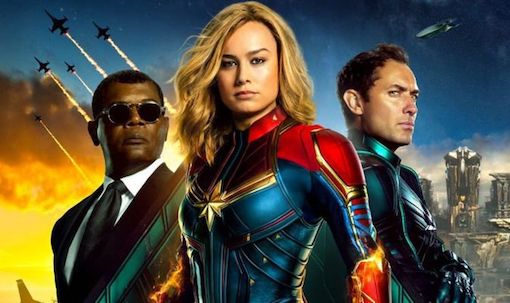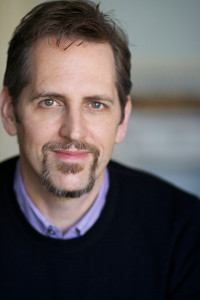Whether you’re a diehard fan of the Marvel Cinematic Universe or agree with Coppola and Scorsese that comic book superhero movies are the scourge of our culture, I think we can all agree that they have taken over a big chunk of the American film industry — at least for now — and are making certain studios a lot of money.
Most writers I coach don’t come to me because they’re interested in writing superhero movies. Either they aren’t big fans of the genre, or don’t see this as something they could do well, or just recognize the truth that the films getting made come entirely from pre-existing intellectual property owned by the studios making them. In other words, they were comics first, and have a certain built-in fanbase already. The studios aren’t looking for brand new superheroes from unknown writers. They’re looking to hire established writers to pen the latest installment of their pre-owned franchises.
Still I think it’s important to recognize what makes these films (or the best of them) work on a story level. There are lessons all writers can learn from the success of these tales of battle between special-powered heroes and villains where the fate of humanity (or something close to it) seems to be at stake.
And that’s a big part of what makes them work: sky-high stakes. It’s not even just life-and-death stakes, which are already the highest kind. It’s life and death for a vast number of people. It’s hard not to feel the importance of what they’re trying to do.
These movies also prioritize entertainment value. They are fun to watch. Technology has transformed what can be cinematically achieved in terms of action spectacle, and that sort of visual eye candy appeals to many people.
But they’re not just about action. At their core, they’re about characters, just like any other genre. Ideally the audience comes to bond with the superhero character on a personal level, relates to them and even feels for them as they go through difficult trials. And they have to be difficult. That’s key. Even though they have special powers, the forces aligned against them have to be more powerful, and have to be winning, for essentially the entire movie, right up until the end.

So how do we get audiences to relate to these people who have special powers, and are thus so different from us, with certain advantages we might only fantasize about having?
A big part of it is the difficulties. We relate to people who are having a hard time. And so the best movie main characters are usually losing, struggling, and pushed to their limit.
It also helps with relatability that these characters are heroic — risking a lot to help others. There’s nothing more likable than that.
The best superhero movies also tend to explore a particular kind of character situation that is really appealing to audiences. They’re about people who feel that they’re different from others, who don’t quite fit in, who might have special abilities but who also tend to have unique flaw, or curse, that brings a lot of pain and difficulty.
Blake Snyder’s Save the Cat books talk about this. They introduced the idea of ten distinct type of stories (or genres) that successful movies tend to fall into. I always recommend writers work with these when they’re developing ideas, and make sure their ideas are a good match for at least one of the ten types. It helps ensure that they’ve got a concept that is viable, before they invest all that time in writing it. (Which is also the focus of my book The Idea.)
I’ve also done posts about the other 9 genres: Fool Triumphant, Buddy Love, Whydunit, Golden Fleece, Rite of Passage, Out of the Bottle, Institutionalized, Monster in the House and Dude with a Problem. I highly recommend checking out those links, and the second book in Blake’s series, Save the Cat Goes to the Movies, which explores each genre’s five subgenres, with many movie examples for each.

For the Superhero genre, this book broke it down into “Storybook Superhero” (like The Lion King), “Fantasy Superhero” (The Matrix), “People’s Superhero” (Gladiator) and “Comic Book Superhero” (all the Marvel and D.C. movies). Plus one last genre: “Real Life Superhero.” This is the one for writers who want to do true story adaptations about people who didn’t have literal physical super powers, but who did embark on a heroic mission of sorts against adversaries much more powerful than them, such as Erin Brockovich, Schindler’s List, Gandhi, Braveheart and Dallas Buyers Club.
Notice in all of these there is a very clear antagonist/adversary that essentially functions as a super villain, and a very difficult mission to do the right thing, and save other people in some way. At the same time, the main character typically has a difficult personal journey and an arc of their own, as they struggle with playing this role in the world, and with the costs and pain that seem to come with it.
This personal side is key, in any Superhero movie. What really makes audiences connect is relating to a character’s personal pain and emotional needs, beyond just the surface plot need to defeat the bad guys. Yes, they want to be entertained by the spectacle, awed by the visuals, and energized by the battles, but what makes things really resonate is connection to a very human character dealing with struggles that anyone can relate to.
And one struggle we can all relate to, ironically, is the feeling of being all alone, with a sense that no one really gets you, but with a need to achieve something that seems beyond you. In a sense, we’ve all been a “superhero” at some point in our lives: facing something huge and terrible, and having to rise up and be our best selves to defeat it — seemingly on our own.
So if you’re interested in writing superhero movies of any sort, keep this in mind: it’s about universal emotional relatability, on a personal level, coupled with a heroic and difficult external challenge that is entertaining to watch, and yet feels real somehow to the world of the story.
Actually one would be well served to keep those elements in mind for any story, in any genre or medium.



I disagree with the notion that Gladiator is a Superhero film. The motivation which, unless I have missed something, seems to be lacking from the discussion of all 10 genres is Vengeance. I see Gladiator as a Golden Fleece film with Vengeance as the quest item. Thoughts?
Hey Alex,
I don’t necessarily disagree with you about Gladiator. I think Blake Snyder called it a Superhero because of the character’s unique situation, how he’s different from others, has a nemesis, and ultimately if he defeated him, it would be a heroic act because he’d be a better leader. (I think this is spelled out somewhat in Save the Cat Goes to the Movies.) But because he spends most of the movie unable to fight the nemesis or in a position to be a hero to others, it does feel more “Fleece-y” to me.
As to “vengeance,” I see it more as seeking escape and justice. To me, vengeance is of limited use as the driver of a main character because it’s harder to sympathize with for a whole movie. Now if getting vengeance will also stop a bad guy from hurting others, that’s a different story. Or if it will help others in some way by bringing him to justice. But straight “revenge for revenge’s sake” is tougher.
The lead of one of my screenplays is someone I describe as a “semi super-heroine” — a woman who undergoes a bizarre physical transformation giving her superior size and strength and is fearful she won’t survive it, but does. While she futilely awaits a reversion to normal from the scientist who accidentally altered her (and gave her shelter as she hides from the world), she not only falls in love with him but grows comfortable with her changes. As her new self, the former Vegas waitress becomes a beloved showroom headliner with a $1 million salary — but when her scientist boyfriend is kidnapped, it’s up to her to save the day, and she does, sacrificing fame and fortune to rescue him (but with a twist at the end). It’s a charming rom-com with four-quadrant appeal.
‘In a sense, we’ve all been a ‘Superhero’ at some point in our lives’.
What a great a thing to say and write (Genius)…Thank you Erik.
Cheers! Steve R.
Great blog as usual. I’m writing a bit of a superhero television series so I appreciate your insight.
Loved it. Great insights. By coincidence, I’m reading Save the Cat these last few nights.